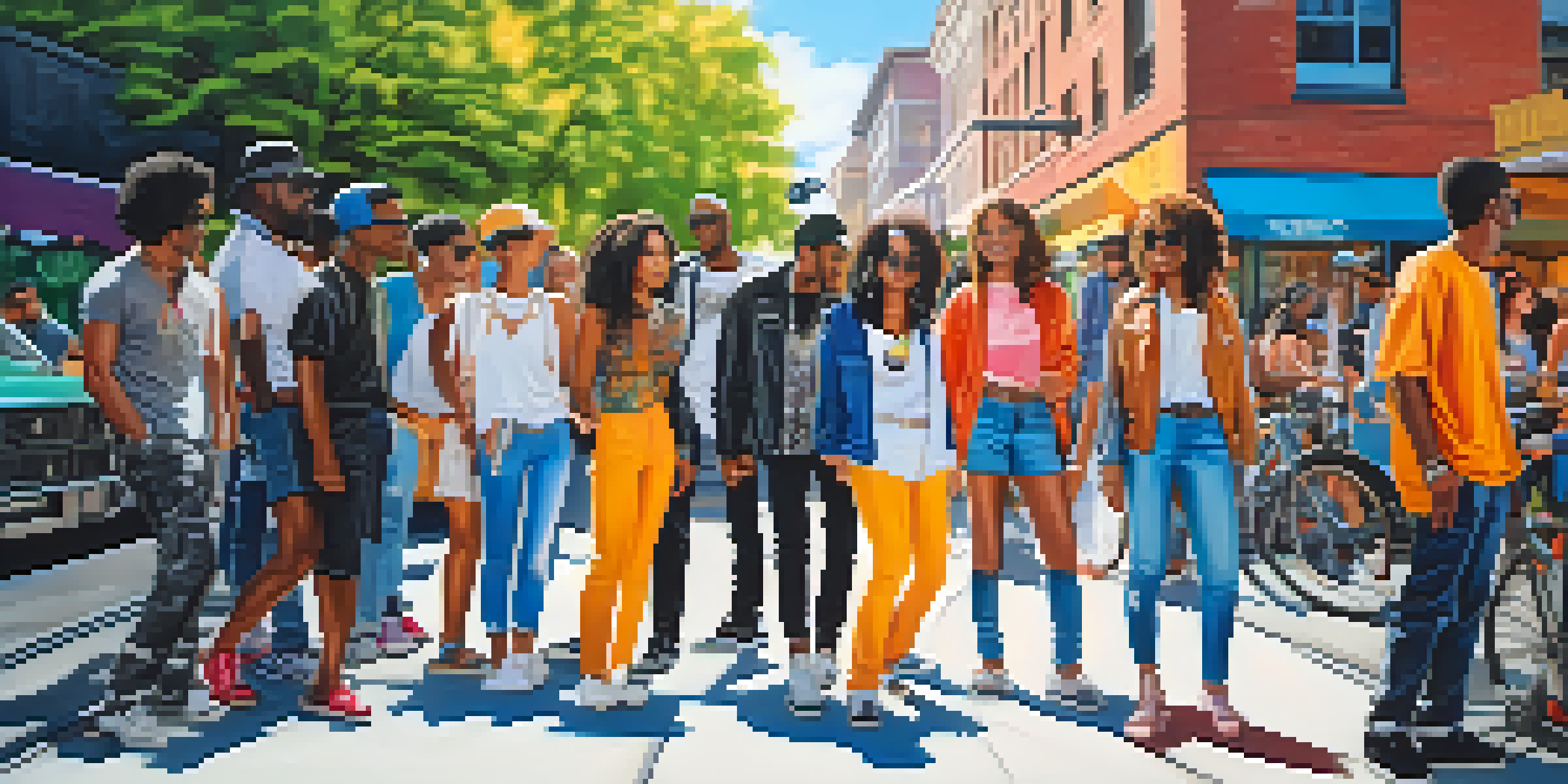The Influence of Social Media on Fashion and Branding

The Rise of Influencer Culture in Fashion
In recent years, influencers have transformed the fashion landscape. With millions of followers, they wield significant power in shaping trends and consumer preferences. Brands now collaborate with influencers to reach their target audiences more authentically and effectively.
Influencers are the new celebrities, and their impact on consumer behavior is undeniable.
For instance, when a popular influencer showcases a brand's clothing in a casual, relatable setting, it resonates more with followers than traditional advertisements. This creates a sense of trust and connection, making followers more likely to purchase the featured items.
Moreover, influencers often provide immediate feedback and engagement, allowing brands to adjust their strategies on the fly. This dynamic interaction helps fashion labels remain relevant and in tune with the ever-evolving tastes of consumers.
Social Media Platforms: The New Runway
Gone are the days when fashion shows were the sole authority on trends. Today, platforms like Instagram and TikTok serve as vibrant runways where anyone can showcase their style. This democratization of fashion allows for diverse representations and fosters creativity.

For example, TikTok's viral challenges encourage users to showcase their outfits and styling techniques, creating a ripple effect that can lead to new trends overnight. Brands that recognize this power can leverage user-generated content to boost their visibility.
Influencers Shape Fashion Trends
Influencers have become powerful figures in fashion, effectively driving trends and consumer preferences through authentic engagement.
Additionally, these platforms enable real-time feedback, allowing designers to gauge public reactions and adapt their collections accordingly. This shift not only influences what is trendy but also how brands develop their identities in the digital age.
The Role of Hashtags in Fashion Discovery
Hashtags play a crucial role in how fashion content is discovered on social media. By using specific hashtags, brands can categorize their posts and increase their visibility among users interested in particular styles or trends. This strategy is essential for reaching new audiences.
The future of retail is social, and brands must adapt to this new landscape to survive.
For instance, a brand that uses hashtags like #StreetStyle or #SustainableFashion can connect with niche communities passionate about those topics. This targeted approach not only expands a brand's reach but also cultivates a loyal following.
Moreover, trending hashtags can create a sense of urgency and excitement around a product launch, encouraging users to engage and share. Brands that master the art of hashtagging can significantly enhance their online presence and influence.
The Impact of User-Generated Content on Branding
User-generated content (UGC) has become a powerful tool for fashion brands. When customers post photos wearing a brand's products, it serves as authentic endorsements that resonate with potential buyers. This organic marketing approach is often more effective than traditional advertising.
For example, brands that feature UGC on their social media accounts create a community feel and encourage more customers to share their experiences. This fosters a sense of belonging and loyalty among followers, who feel valued and appreciated.
Social Media as a Fashion Runway
Platforms like Instagram and TikTok have transformed the fashion landscape, allowing diverse styles to emerge and trends to evolve rapidly.
Additionally, UGC allows brands to showcase real-life applications of their products, making them more relatable. This strategy not only strengthens brand identity but also enhances trust among consumers, leading to increased sales.
The Speed of Trends in the Digital Age
Social media has accelerated the pace at which fashion trends emerge and fade. In the past, trends could take months or even years to catch on, but now they can go viral in a matter of days. This rapid cycle demands that brands stay agile and responsive.
For instance, a fashion item featured in a viral TikTok video can see a surge in demand almost instantly. Brands that are quick to recognize and respond to these trends can capitalize on the momentum and boost their sales significantly.
However, this fast-paced environment also poses challenges, as brands must constantly innovate to keep up. Those that embrace this challenge can position themselves as trendsetters, while others may struggle to maintain relevance.
Building Brand Authenticity Through Social Media
In an era where consumers value authenticity, social media provides brands with a platform to share their stories and values. By showcasing behind-the-scenes content, brands can create a more personal connection with their audience, enhancing their overall image.
For example, brands that share their sustainability initiatives or ethical production processes can resonate with consumers who prioritize these values. This transparency fosters trust and encourages customer loyalty.
User-Generated Content Builds Trust
User-generated content fosters a sense of community and authenticity, enhancing brand loyalty and relatability among consumers.
Furthermore, engaging with followers through comments, polls, and live sessions can humanize a brand. This genuine interaction helps brands stand out in a crowded market, as consumers are more likely to support brands that align with their beliefs.
The Future of Fashion Branding in a Social Media World
As social media continues to evolve, so will the fashion industry. Brands must adapt to new platforms and technologies to remain competitive. This may include exploring new forms of content like augmented reality (AR) try-ons or virtual fashion shows.
Moreover, the rise of social commerce allows users to shop directly through social media platforms, blurring the lines between content and commerce. This seamless shopping experience can significantly enhance brand visibility and sales.

Ultimately, the future of fashion branding will rely on a deep understanding of audience preferences and the ability to engage authentically. Brands that embrace this shift will be well-positioned to thrive in the ever-changing landscape of fashion and social media.